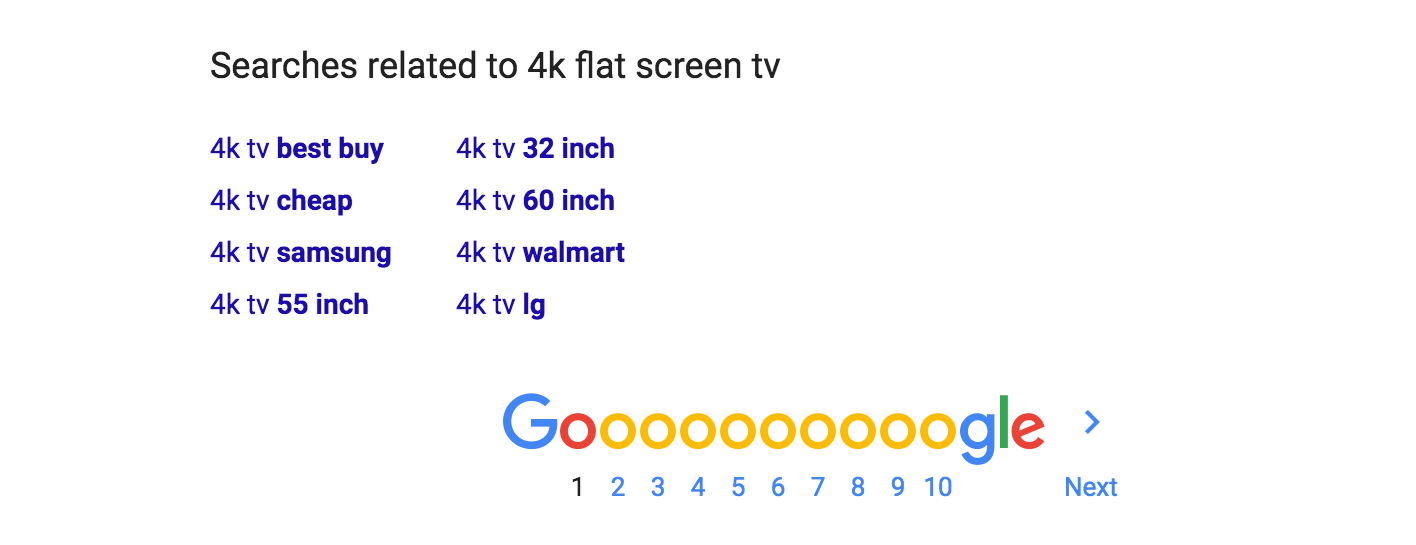Home-Base Content Marketing Tips: Basic Keyword Research
The days of traditional outbound marketing are dead.
Print advertisements. Banner ads. Radio commercials. Brochures. Ads in those annoying things that go from mailbox to recycling bin – a phone book.
These forms of outbound marketing are hard to measure, but many still rely on them. Yes, some forms still work, like the latest Versace ad in Esquire or Jaguar in Fortune. But for the other 99% of businesses that don’t have six-figure or more budgets, these types of traditional outbound marketing are not going to move the proverbial needle.
Some businesses we’ve worked with, typically local businesses, continue to spend 90% of their marketing budget on these typically non-measurable forms.
Yes – 90%.
 From sport apparel companies to law firms, we’ve witnessed thousands of dollars wasted. Psychologically these campaigns work for companies, but with the lack of concrete and trackable measures, all that are produced are vanity metrics and hope.
From sport apparel companies to law firms, we’ve witnessed thousands of dollars wasted. Psychologically these campaigns work for companies, but with the lack of concrete and trackable measures, all that are produced are vanity metrics and hope.
In a world where online presence means everything, these businesses clearly have to wake up and embrace inbound marketing.
Once they wipe the vanity snot from their eyes, they need to refocus and embrace the number-one way to influence prospects and create not just customers, but loyal ones that will spread the word of their business: SEO-driven content marketing.
And every campaign should begin with what we call Home-Base Content Marketing: your company’s website copy. A recent Neil Patel survey says that 76% of online shoppers felt closer to a brand after reading that brand’s on-site content.
This content needs to educate and answer direct customer questions while not boring the hell out of readers.
Online shoppers are more internet savvy than ever before and conduct thorough research before making purchases or ordering a service. When they get to your website, your content becomes a crucial lead generator. And by copy, we mean everything – service pages, blogs, white papers, case studies, etc.
Before we get into the actual content creation for Home-Base Content Marketing, which should be written traditionally but for an SEO-driven world, we must discuss the foundation on which all of your website copy is built: keywords. This will be part one in a series about creating the strongest copy every for your website. Regardless if you’re selling tackle to deep-sea fisherman or Gucci bags to worldwide travels, every piece of content needs to begin with keyword research.
This is what will help your products/services get found in search results, though it’s just the beginning of a strong Home-Base Content Marketing strategy. Keyword research is followed by actual content creation, with focus on company voice, marketing messages, education and basically telling prospects why they should choose you over the competitors (we’ve covered this heavily in our blog).
We’ll keep this keyword stuff simple, and cut the BS; this isn’t a hard process. We’ve discussed advanced keyword research, but for this series, we’re going back to the basics of keyword research for any page you are building.
Remember – keyword research is as vital to SEO as it is to content creation; SEO allows people to find your website online, which you should treat like your second COO, and the content converts those visitors to customers/clients.
Basic Keyword Research: The Essentials
Keywords represent the words or word phrases users type into a search engine bar to find specific information. Marketers use keywords to communicate to users and search engines the intent of your webpage(s). When someone searches for a term, those keywords are displayed bold in a search engine result page (SERP) listing’s title tag (main title) or meta description (copy below main title and url).

Optimizing on-page SEO elements with targeted keywords will communicate to search engines the topic of your webpages (stay clicked to ContentMender for more on these elements in part II of this Home-Base Content Marketing series).
This will drive impressions and search volume for your page in related searches if that page ranks high enough. Page rank depends on content quality and numerous other SEO factors, such as backlinks and site speed, which we will continue to discuss on our blog. But its foundation resides in keyword research.
Types of Keywords
There are four main types of keywords:
- Short Tail: Common or broad search words or phrases, 1-2 words in length. Examples include “ducati” and “ducati monster.”
- Long Tail: Longer search phrases that communicate specific intent. Examples include “Calculating content marketing ROI” or “ducati monster for sale in pennsylvania.”
- Branded: Includes the brand name or semantic variations. Examples include “ducati motorcycles.”
- Geo-targeted: Location-specific keywords used for local search marketing. Examples include “ducati services scranton.”
This does not represent the full list of types of keywords; its simply a starting point for keyword research. At the very basics, the optimal formula involves finding a keyword phrase with limited competition but high search volume. Finding these types of keywords is difficult, though.
You should be aware of keyword categories and their role to user intent. According to SEMrush, there are four keyword categories:
- Commercial keywords (broader terms: sport motorcycles)
- Informational keywords ( target terms for research/information: “Ducati Monster Specs”)
- Navigational keywords (brand terms that users already know: “motorcycle parts Amazon” or “2018 Ducati Motorcycles”)
- Transactional keywords (user ready to make a purchase: “Ducati Monster Accessories for Sale”)
Content marketers and small businesses will benefit from leveraging Informational Keywords that denote a question-based search. Informational Keywords almost entirely consist of long-tail keyword phrases, which will have much lower search volume and less competition.
Short-tail commercial keywords are virtually impossible to rank for unless it’s a new brand or coined term such as “ContentMender” or “Home-Base Content Marketing.” The level of competition is fierce for a broader keyword, and you need established brand authority to rank for generic searches.
Long-tail keywords present the highest ROI because they typically have little competition and are more specific to user intent. Mainly, long-tail keyword research will fall into informational keywords because they often denote a question or a hyper-specific need.
Not only are you more likely to rank for a specific long-tail keyword phrase, but these phrases also drive the right kind of audience members to your website that you want to turn into customers/clients. These audience members are seeking specific information, such as “How far away is the sun?”
The following is the first organic result for the search in Google:

Semantic Search Terms
It’s important to begin gathering similar keyword phrases to match content to user intent – not every user types in the same search phrases. This is for what Google calls “semantic search.”
Search Engine Journal provides a simple definition:
Semantic search describes a search engine’s attempt to generate the most accurate results possible by understanding:
- Searcher intent.
- Query context.
- The relationships between words.
In layman’s terms, semantic search seeks to understand natural language the way a human would.
For example, your business may sell TVs, so you may begin with the phrase “4K TV” and move onto other phrases:
- 4K flat screen TV
- Cheap 4K flat screen TV
- 4K TV on sale
- Curved 4k TV
- 60 inch curved 4k TV
You could also optimize each keyword phrase for branded keywords, such as “Vizio 4k flat screen TV.”
Next is the location. If you operate a local business in Philadelphia, you could optimize a phrase for “4k TV on sale Philadelphia.” This could be extended to 4k tv stands, repair, and even the best 4k TV brands.
You can begin your keyword research with a few of the most-used tools, such as SEMrush, Google’s Keyword Planner (need active AdWords account, which is free), or Ubersuggest. Each tool provides an analysis of keyword search volume, competitiveness, similar keyword phrases, and some even present the average cost-per-click (CPC). Typical keyword research documents have all of these elements laid out on Excel or Google Sheets, usually prioritized by volume.
Also, when you type a term into Google, check the suggestions at the bottom of the page:

Create a list of keyword phrases related to your business objectives, and begin developing topics that take these keywords into mind. Sometimes the simple process of keyword research can help you develop unique topics.
The best practice is to target one or two keywords and use those in your title tag, headline tags, throughout the article, in image Alt Text, and all meta data.
This tells readers and search engines what your main topic is about. Next, creatively integrate your list of related keywords throughout the article to show relevancy for semantic search, which we defined above.
One issue with many companies is that they think keyword research is a one-and-done thing. It’s never set and forget; new products arrive, trends occur, and if your keyword strategy reflects that, you’ll always be a few steps ahead of the competition. In short, keyword research is not a set and forget; it needs to be revisited often; we recommend at the very least once a year, though twice yearly is ideal, and quarterly excellent–especially for those who like to discover new topics through the practice of keyword research.
Concluding Thoughts
Understand that organic search is a long-term investment. To make that investment worth every penny, don’t skimp on keyword research.
Take note, also, that some keywords are not competitive for a reason: they simply have no search volume. Unless you’re selling a super expensive product or service that targets a small number of people that only know the keyword, we’d stay away from search volume of 10 and below. Choose your keywords wisely before beginning your content marketing campaign.
Just as important as your keyword research is your content’s readability and relevance. We’ll tackle that in an upcoming blog, but our next Home-Base Content Marketing blog will explain how to optimally implement your keywords into your content.


